Best Green Teas
This post may contain affiliate links. Simple Loose Leaf is a participant in the Amazon Associates Program, an affiliate advertising program designed to provide a means for sites to earn advertising fees by linking to Amazon.com. Tried green tea and didn’t like it? Maybe it had a bitter taste, murky liquor or unattractive color? If you are avoiding green tea because your first green tea drinking experience was bitter, you may be missing out on a truly amazing drink. Not all green teas are the same. If you choose the right type, use high quality leaves and follow brewing recommendations, you may discover amazing flavors, and enjoy a cup packed with dozens of potential health benefits.
What is green tea?
Green tea is a non-oxidized type of tea made from Camellia sinensis tea plant. It usually has a fresh and vegetal flavor, but depending on the type, it can be light or strong, sweet or bitter, nutty or grassy, smoky or with a seaweed note. The main producers of green tea are Japan and China. However, many other countries are producing green tea too, although not as much as other types of tea. Flavor of green tea will depend on the terroir, a unique set of environmental and climate conditions.How is green tea produced?
Making green tea includes the following steps: harvesting tea leaves, withering (most of the times), “kill-green” step that stops the oxidation, rolling/shaping and drying. Unlike Chinese green teas, Japanese teas are not withered. The other main difference is the “kill-green” step. Japanese tea producers steam the leaves to stop the oxidation and preserve the color, flavor and nutrients, while the Chinese green teas are usually pan-fired. That’s why Japanese green teas will have a more grassy and vegetal flavor.What qualities should I look for in a green tea?
Not all green teas are the same. To know what you can expect from your tea, look for the following qualities:-
-
-
Shape of the leaves
You can judge the flavor of green tea by looking at the leaves. Whole unbroken leaves are likely to give a more flavorful, lighter cup. For example, Chinese Dragon Well tea has long flat leaves that infuse into a brighter and lighter cup with no bitterness. On the other hand, teas like Misty Morning, with smaller curly leaves are likely to give a stronger infusion. Furthermore, green tea bags contain only dust and very small particles that usually infuse into a very strong cup with some bitterness. -
Color of the leaves
Color of the tea leaves can tell you a lot about your tea too. Not only it’s possible to tell the type of leaf used for making the tea and to know how it was processed, but you can also know what kind of flavor to expect. For example:- Dark-green - dark green sencha leaves will indicate the tea was deeply steamed and that it will have a strong vegetal grassy green tea flavor
- Bright green - sencha with brighter leaves is likely only lightly steamed and will be less grassy
- Green-grey - teas with dark green-grey leaf color are likely to have more astringency and infuse into a stronger, sometimes smoky cup
- Green-yellow - bright green-yellow leaves will give a pleasant, slightly sweet and slightly toasty tea
- Brown-yellow - green teas with brown-yellow color are usually roasted, and will have a roasted flavor.
-
Scent of dry leaves
Unlike flavored teas, pure green teas may not have a very strong flavor. However, they should all have a pleasant scent once you place them into a preheated teapot.When should you drink green tea?
-
The best green teas to try
1. Japanese sencha
Japanese sencha is a classic in the world of green tea. With a fresh, green and grassy flavor, it’s a true example of just how green a green tea can be. If you are completely new to green tea, trying a real Japanese sencha green tea may be a wonderful adventure. It tastes great both hot and cold, and you can steep the same leaves 3 times. However, if you over-brew it, it can be bitter.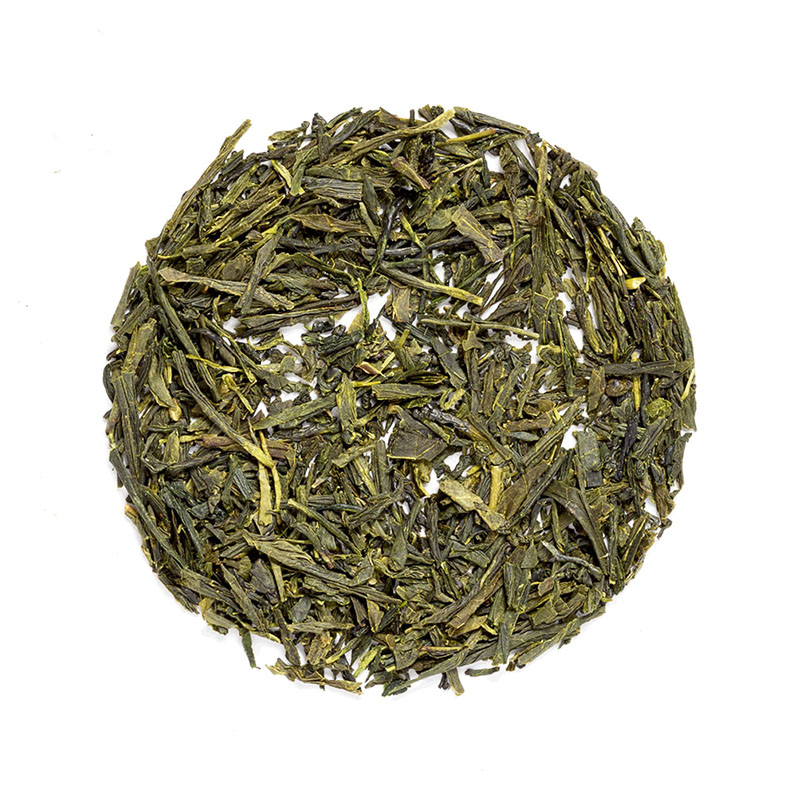
-
- Japanese sencha green tea
-
2. Japanese kukicha
Kukicha or a twig tea is tea made from twigs and stems, rather than leaves. However, it may contain some leaf particles too. Kukicha is low in caffeine, and it’s suitable for drinking later in the afternoon. It has a pleasant, mild, slightly sweet flavor without bitterness.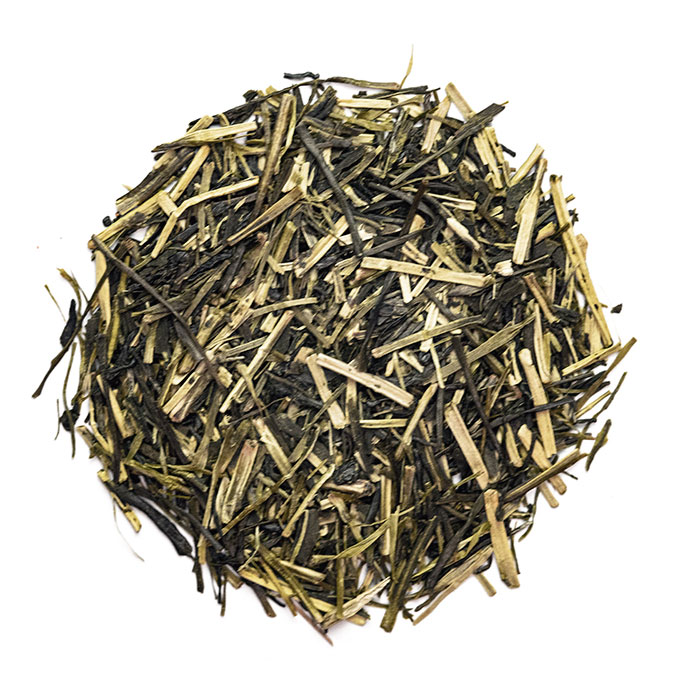
- Japanese Kukicha green tea
-
3. Matcha
Matcha is a unique Japanese green tea powder made from shaded tea leaves. In a way, matcha is a complete opposite of kukicha. Before being ground into a fine powder, all stems, twigs and veins are removed from the leaf. The flavor of matcha powders is described by sweetness, bitterness and umami – a savory seaweed-like flavor.4. Gyokuro
Gyokuro is a shaded Japanese green tea. What makes it very special is not only the shading process, but the final flavor and brewing method too. It’s one of the most flavorful teas in the world. Unlike other green teas, you should always brew gyokuro with cooler water – usually from 104°F - 140°F. Cool water will extract a very savory umami flavor. Gyokuro is high in caffeine. This tea may appeal to experienced tea drinkers more.5. Genmaicha Green tea
This traditional type of green tea is popular worldwide. It has a lighter, toasty and nutty rice flavor, perfectly balanced with grassy and vegetal green tea. Genmaicha is a lighter daily tea, great both hot and cold, and will rarely become bitter – even if you over-brew it.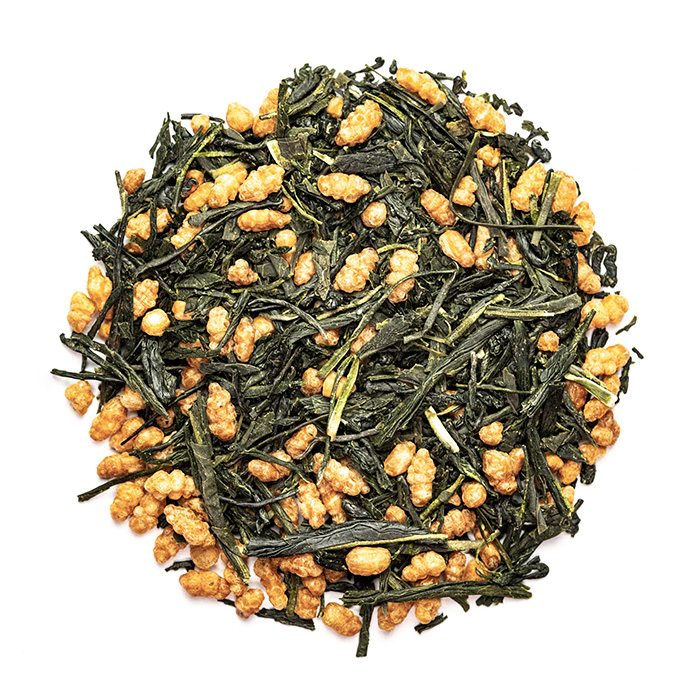
- Genmaicha tea with sencha
-
6. Jasmine Green tea
A classic among scented teas, Jasmine Green tea is a must try if you like floral flavors and stronger teas. It’s made by mixing tea leaves with fresh jasmine flowers, then removing the flowers once the leaves soak up the jasmine essence. This step is repeated many times until the right flavor is achieved. Jasmine Green is one of the most wonderful options for cold-brewing. Steeping the tea leaves in cold water overnight will give a light, but flavorful cup packed with benefits.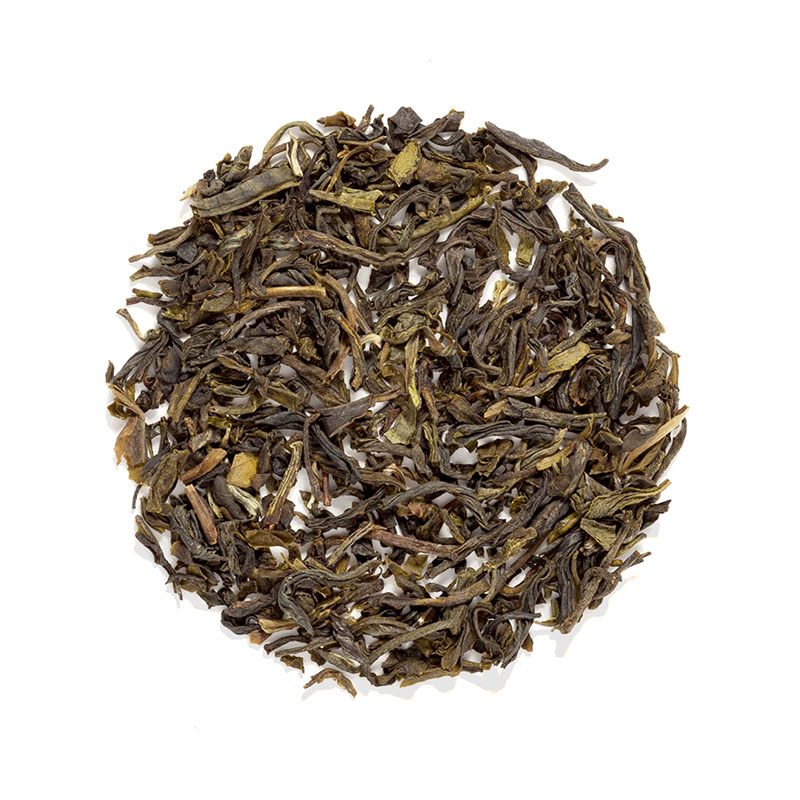
- Jasmine Green tea
-
7. Guranse Estate green tea
Guranse Estate green is an Indian green tea. India is famous for its black teas, while the green types are still quite a novelty. Even though they will always have dark leaves, they are almost never bitter. Indian green teas usually infuse into a rich and smooth cup, full of flavor but easy to drink.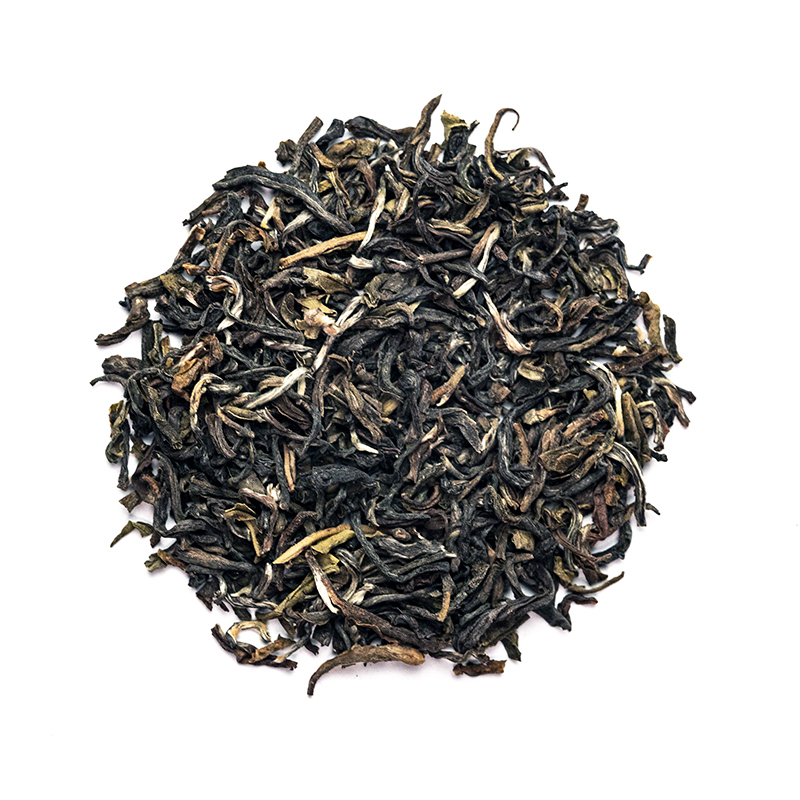
- Organic Nepalese green tea from Guranse Estate
-
8. Dragon Well
Dragon Well is a true gem among Chinese teas and one of the most popular green teas in the world. It has a beautiful flat leaves that infuse into a slightly nutty, slightly sweet cup. Dragon Well is lighter than many green teas, but it can be bitter if over-brewed.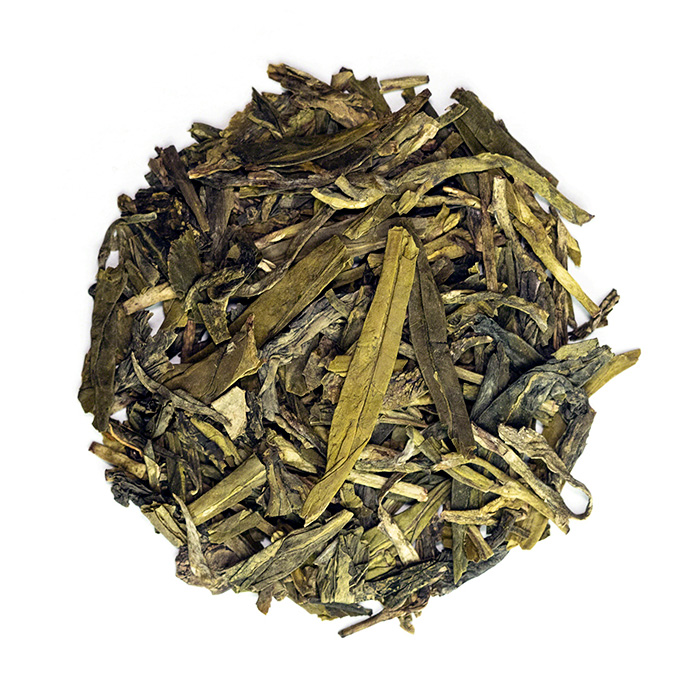
- Organic Dragon Well
-
9. Chunmee Green tea
Chunmee is a unique Chinese type of tea with stronger, a bit smoky and slightly nutty flavor. You may like it if you prefer stronger teas, or if you want to add condiments to your green tea.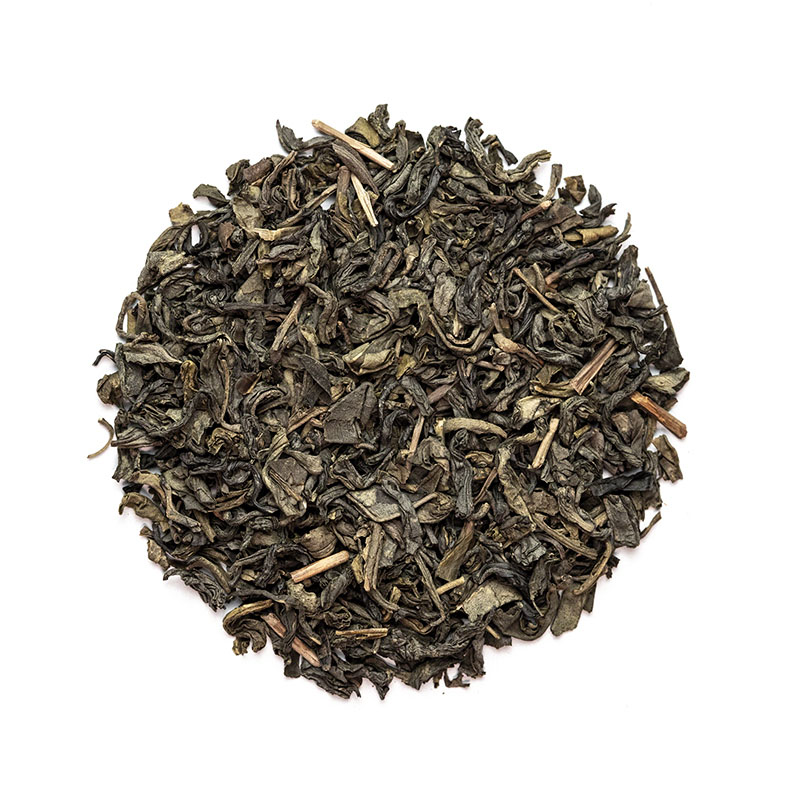
- Organic Chunmee Green tea
-
10. Mint Green tea
Mint green tea is a traditional type of tea from Morocco. It’s made with strong gunpowder green tea leaves and either fresh or dried mint. Moroccan mint tea can be served with or without sugar.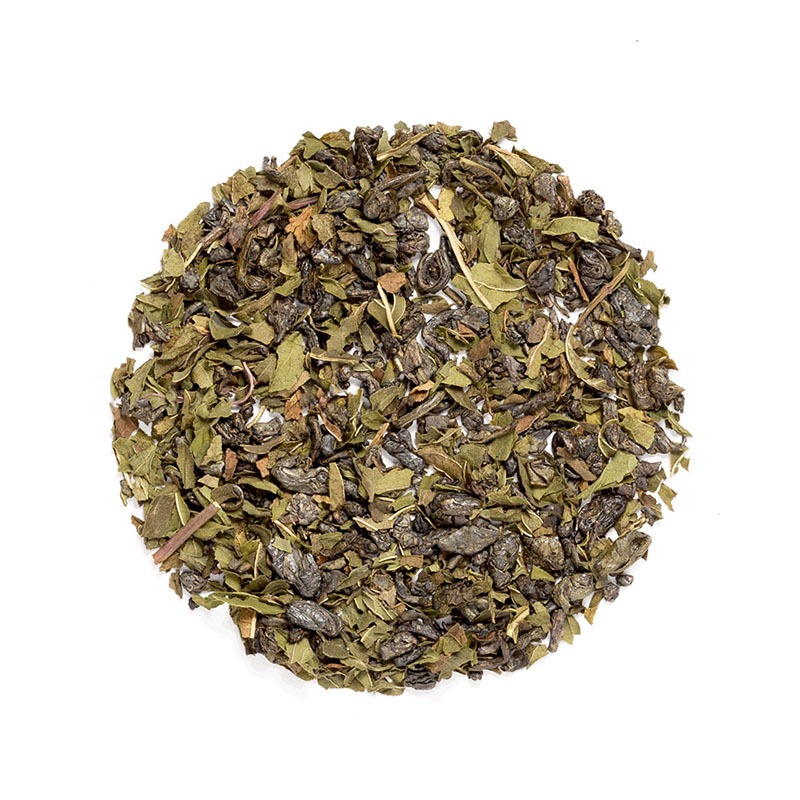
- Moroccan Mint green tea
-
How to make the right green tea choice?
If you just want to enjoy a regular cup of green tea, choosing the flavor that you will enjoy the most is very important. However, if you want to use tea for making iced tea, tea latte or even cook with tea, then you should pay attention to the following:- If you want to make a tea latte, choose strong, smooth green teas with dark green-brown or green-grey leaves. Except the leaf color, pay attention to the size of the leaves too. Smaller broken leaves will infuse into a stronger cup. The exception to this rule is matcha tea.
- If you want to cold brew tea, some types are exceptionally delicious when cold-brewed. For example, flavored teas blended with sencha or young hyson tea leaves. Choose fruity or floral blends or pure sencha or jasmine green tea.
- If you want to cook with tea, matcha is the best tea to choose.
- When making sweet or iced tea, stronger smooth and deep blends are the best. Young hyson tea base has both fresh and deep flavor.
-
Disclaimer: This article is for informational purposes only. It’s not intended to replace medical advice, diagnosis or treatment. Every person is different and may react to different herbs and teas differently. Never use teas or herbs to treat serious medical conditions on your own. Always seek professional medical advice before choosing home remedies.
References:
[1] https://pubmed.ncbi.nlm.nih.gov/14969518/ [2] https://www.ncbi.nlm.nih.gov/pmc/articles/PMC5703787/
More from:
SLL



Leave a comment